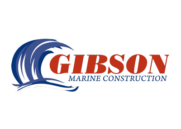When it comes to shoreline engineering, there exists a good deal of information about how physical structures are adversely impacted by the natural process of erosion.
However, when it comes to saving and protecting people’s homes, it is possible to keep people and nature in perfect harmony. Trust us. We know our stuff.
Seawalls that have outlived their usefulness can be environmentally detrimental.
In the past it seemed that all people cared about when it came to seawalls was keeping the water out.
However, modern-day consumers are not only green when it comes to the environment, but also in terms of their bank accounts.
People want to make purchase decisions that will give them more value for their money. Older seawalls just don’t meet the requirements for being “green” in either sense.
Why Your Old Seawall Is Gray Not Green
Older seawalls are typically concrete structures – which may be considered ironic because water and salt are extremely damaging to concrete! With waves constantly crashing into the seawall, the salted water gets into the tiny pores and cracks of the wall which will start eating away at the concrete. This is not to discredit concrete seawalls, but it is essential to completely evaluate an environment before deciding what material best serves the purpose. Today, concrete seawalls are mostly appropriate for areas with minimal wave action.
Not only can the material of antiquated seawalls do a disservice, the shape of the structure can be a problem.
At one time, seawalls were built vertically. Vertical structures reflect wave energy back into the ocean after a strike, and ultimately alter natural sea currents. Wave and current energy will concentrate at the ends of the wall and increase erosion at these points, defeating the purpose of a seawall. Changing currents also have ecological impacts including loss of habitat and reduced biodiversity.
How You Can Protect Your Property and the Environment
The secret to shoreline stabilization is to use site-specific methods to balance the needs of waterfront residents with nature’s behaviors. There are however, a few key points that are applicable to any situation:
- Seawalls should be sloped
Unlike a steep wall, the gradual sloping of a seawall will help absorb the energy of waves, and decrease erosion. Oftentimes, an existing seawall can be complemented with a sloping riprap base to ease the waves’ impact with the wall.
- Use energy absorbing materials
If you live in an area with very high wave activity, a new riprap wall or incorporating riprap into your existing wall will be the perfect option. Riprap is extremely effective in absorbing wave energy. It is usually made of granite, limestone, or concrete rubble from construction sites. Not only will it prevent erosion in a more natural way, but it is a good re-use of sustainable materials.
- Use eco-friendly materials
Although vinyl is derived from crude oil, it is a highly environmentally-friendly material. Vinyl is recyclable and can be used for many more purposes in comparison to other types of plastics. Unlike concrete, it is extremely resistant to moisture and humidity which will increase the lifespan of your seawall (and go easy on your bank account).

